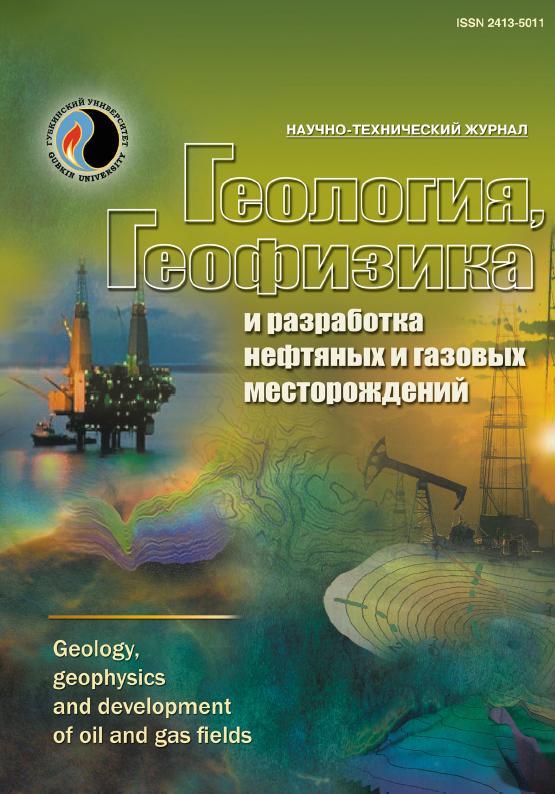Geochemical research methods for studying reservoir rock of deposits in the Western Siberia (latitudinal Ob region)
UDC: 550.4.02
DOI: 10.33285/2413-5011-2021-12(360)-89-95
Authors:
ASTARKINA ANGELA G.1,
SPIRIDONOV DMITRIY A.1,
KRASNYASHCHIKH OLGA S.1,
PETROVA ELVIRA M.1,
ASTARKIN SERGEY V. 1
1
1 LUKOIL-Engineering Limited KogalymNIPIneft Branch Office in Tyumen, Tyumen, Russia
Keywords: reservoir rocks, geochemistry, luminescent bituminological analysis, gas chromatography, pyrolysis, hydrocarbons, organic substance, biomarkers
Annotation:
The article considers a complex of geochemical studies of core, developed in the Center of core studies of and reservoir fluids, a complex of geochemical studies of core. The complex is aimed at solving practical problems of oil and gas geology on the allocation and characteristics of oil-saturated intervals. In addition to solving this task, the research complex allows allocating and diagnosing oil and gas source thicknesses in the context of deposits.
The developed complex of research includes luminescent-bituminological studies, static vapor phase gas chromatographic analysis, core pyrolytic studies by applying the Rock-Eval method, chromate-mass spectrometric studies of oil and bituminoid. The principle of a single point being the ground of researches allows characterizing productive layers by applying various methods with the possibility of specifying and supplementing each method.
On the example of the core obtained from a well of one of the deposits in the Western Siberia, a complex approach to the isolation and characteristics of productive intervals, characteristic of the organic matter was demonstrated. The well under consideration is characterized by the presence of productive oil-saturated layers in Vasyugan and Tyumen formations, identified by luminescence-bituminological and gas chromatographic analyses, as well as by the Rock-Eval pyrolytic method. The results of pyrolytic studies using the Rock-Eval method of Bazhenov formation showed high content of the organic matter in the rocks. In-depth study of chloroform bitumen by the method of chromate-mass spectrometry showed differences in the initial type of the organic matter which generated by hydrocarbons.
Bibliography:
1. Plotnikova I.N., Batyrbayeva R.A., Smelkov V.M Lyuminestsentno-bituminologicheskiy analiz: metodich. posobiye po vypolneniyu analiza. – Kazan’: Kazanskiy un-t, 2015. – 24 s.
2. Bazhenova T.K., Dakhnova M.V., Zheglova T.P. Neftematerinskiye formatsii nefti i gaza dokembriya i nizhnego-srednego kembriya Sibirskoy platformy / Pod red. A.I. Varlamova, A.P. Afanasenkova. – M. : VNIGNI, 2014. – 128 s.
3. Kleshchëv K.A., Shein V.S. Neftyanyye i gazovyye mestorozhdeniya Rossii: Spravochnik v 2-kh kn. – M. : VNIGNI, 2010. – 832 s.
4. Lopatin N.V., Emets T.P. Piroliz v neftegazovoy geokhimii. – M.: Nedra, 1987. – 76 s.
5. Soboleva E.V., Guseva A.N. Khimiya goryuchikh iskopayemykh. – M.: Izd-vo Mosk. un-ta, 2010. – 312 s.
6. Shanmugam G. Significance of coniferous rain forests and related organic matter in generating commercial quantities of oil, Gippsland Basin, Australia // The American Association of Petroleum Geologist Bulletin. – 1985. – Vol. 69. – № 8. – Pp. 1241–1254.
7. Peters K.E., Walters C.C., Moldowan J.M. The Biomarker Guide. Vol. I : Biomarkers and Isotopes in Petroleum Systems and Human History. – Cambridge: Cambridge University Press, 2005.
8. Hunt J.M. Generation of gas and oil from coal and other terrestrial organic matter // Organic Geochemistry. – 1991. – Vol. 17. – № 6. – Pp. 673–680.

